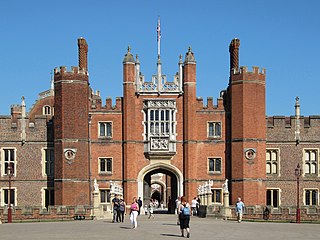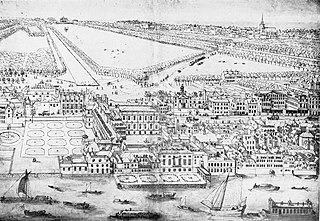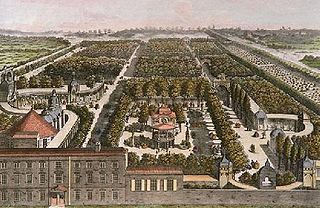 W
WAbbey Gardens is a community garden in East London built on the site of a Scheduled Ancient Monument. The garden area was a row of cottages, and beneath is the remain of the gatehouse of the Stratford Langthorne Abbey. It is managed by a charity, The Friends of Abbey Gardens.
 W
WThe Barbican Conservatory is the second largest conservatory in London, located at the Barbican Centre. It houses more than 2000 species of plants and trees, as well as terrapins and koi carp. The conservatory covers 23,000 square feet (2,100 m2), and is located on top of the theatre's fly tower.
 W
WBrown Hart Gardens, located off Duke Street, Mayfair, is a 10,000 square feet (929 m2) public garden on top of an electricity substation.
 W
WThe Chelsea Physic Garden was established as the Apothecaries' Garden in London, England, in 1673 by the Worshipful Society of Apothecaries to grow plants to be used as medicines. This four acre physic garden, the term here referring to the science of healing, is among the oldest botanical gardens in Britain, after the University of Oxford Botanic Garden. Its rock garden is the oldest in Europe devoted to alpine plants and Mediterranean plants. The largest fruiting olive tree in Britain is there, protected by the garden's heat-trapping high brick walls, along with what is doubtless the world's northernmost grapefruit growing outdoors. Jealously guarded during the tenure of the Worshipful Society of Apothecaries, the Garden became in 1983 a registered charity and was opened to the general public for the first time.
 W
WCremorne Gardens were popular pleasure gardens by the side of the River Thames in Chelsea, London. They lay between Chelsea Harbour and the end of the King's Road and flourished between 1845 and 1877; today only a vestige survives, on the river at the southern end of Cheyne Walk. Cremorne is also a ward of the Royal Borough of Kensington and Chelsea. The population of the ward at the 2011 Census was 7,974.
 W
WCuper's Gardens were 17–18th century pleasure gardens on the south side of the River Thames in Lambeth, London. The gardens looked over to Somerset House near Waterloo Bridge, and were centered on what is now the north end of Waterloo Road.
 W
WDownings Roads Moorings is a mooring for barges on the River Thames near Tower Bridge that is home to a small community of houseboat dwellers in Central London. In 2003 and 2004, they were threatened with eviction by Southwark Council. The members of the community appealed. The then Mayor of London Ken Livingstone commented in a letter to Southwark Council that "The principle of retaining the moorings is supported by the London Plan policy 4C.19 and supporting text contained in paragraphs 4.117 and 4.118. The mix of uses proposed for these moorings should be seen as broadly acceptable in the context of a multi functional Blue Ribbon Network as long as there are appropriate amenity and environmental safeguards in place.". Their eviction was quashed in late 2004.
 W
WEarls Terrace is a street in Kensington, London, W8. It has houses on one side only, a terrace of 25 Georgian houses, built in 1800–1810, all of which are Grade II listed. Numbers 1 and 25, at the ends of the terrace, are converted into flats.
 W
WEltham Palace is a large house at Eltham in southeast London, England, within the Royal Borough of Greenwich. The house consists of the medieval great hall of a former royal residence, to which an Art Deco extension was added in the 1930s. The hammerbeam roof of the great hall is the third-largest of its type in England, and the Art Deco interior of the house has been described as a "masterpiece of modern design". The house is owned by the Crown Estate and managed by English Heritage, which took over responsibility for the great hall in 1984 and the rest of the site in 1995.
 W
WEmslie Horniman's Pleasance is a park in the Borough of Kensington and Chelsea in London. Named after the London County Councillor Emslie John Horniman who created it, and opened in 1914. It is the traditional starting point for the Notting Hill Carnival.
 W
WThe Flanders Fields Memorial Garden is a monument dedicated to the participants of World War I situated alongside the Guards Chapel at Wellington Barracks in Central London, England.
 W
WThe garden of 10 and 11 Downing Street is an L-shaped garden 0.5 acres in size behind the official residences of the Prime Minister of the United Kingdom and the Chancellor of the Exchequer, 10 and 11 Downing Street in the Whitehall district of the City of Westminster in central London. The garden has been gradually developed over the 20th century under successive Prime Ministers.
 W
WHampton Court Maze is a hedge maze at Hampton Court Palace and the oldest surviving hedge maze in Britain.
 W
WHampton Court Palace is a Grade I listed royal palace in the London Borough of Richmond upon Thames, 12 miles south west and upstream of central London on the River Thames. Building of the palace began in 1514 for Cardinal Thomas Wolsey, the chief minister of King Henry VIII. In 1529, as Wolsey fell from favour, the cardinal gave the palace to the king to check his disgrace. The palace went on to become one of Henry's most favoured residences; soon after acquiring the property, he arranged for it to be enlarged so that it might more easily accommodate his sizeable retinue of courtiers. Along with St James' Palace, it is one of only two surviving palaces out of the many the king owned. The palace is currently in the possession of Queen Elizabeth II and the Crown.
 W
WHopton's Almshouses are almshouses and a committee room in Southwark, London, SE1 at Hopton Gardens, 10–11 Hopton Street, all of which are Grade II* listed.
 W
WKenwood House is a former stately home in Hampstead, London, on the northern boundary of Hampstead Heath. The house was originally constructed in the 17th century and served as a residence for the Earls of Mansfield during the 18th and 19th centuries.
 W
WKew Gardens is a botanic garden in southwest London that houses the "largest and most diverse botanical and mycological collections in the world". Founded in 1840, from the exotic garden at Kew Park, its living collections includes some of the 27,000 taxa curated by Royal Botanic Gardens, Kew, while the herbarium, which is one of the largest in the world, has over 8.5 million preserved plant and fungal specimens. The library contains more than 750,000 volumes, and the illustrations collection contains more than 175,000 prints and drawings of plants. It is one of London's top tourist attractions and is a World Heritage Site.
 W
WPaddington Street Gardens are two small public gardens located either side of Paddington Street in the Marylebone area of London.
 W
WThe Phoenix Garden is a local community garden in central London, England, established in 1984. Located in St Giles behind the Phoenix Theatre, within the London Borough of Camden, the Phoenix Garden is nestled between the busy Soho and Covent Garden areas. The Garden is located just off St Giles Passage and Stacey Street, north of Shaftesbury Avenue and east of Charing Cross Road.
 W
WThe Privy Garden of the Palace of Whitehall was a large enclosed space in Westminster, London, that was originally a pleasure garden used by the late Tudor and Stuart monarchs of England. It was created under Henry VIII and was expanded and improved under his successors, but lost its royal patronage after the Palace of Whitehall was almost totally destroyed by fire in 1698.
 W
WRanelagh Gardens were public pleasure gardens located in Chelsea, then just outside London, England, in the 18th century.
 W
WThe Royal Botanic Society was a learned society founded in 1839 by James de Carle Sowerby under a royal charter to the Duke of Norfolk and others. Its purpose was to promote "botany in all its branches, and its applications." Soon after it was established, it leased the grounds within the Inner Circle in Regent's Park, London, about 18 acres (7.3 ha), for use as an experimental garden. Sowerby remained as secretary for some 30 years, and J. B. Sowerby and W. Sowerby later also served as secretaries. The garden was open to members and their guests and also to the general public for a fee on certain days of the week. It included large palm-houses and a water-lily house. In the summer, flowershows, fetes, and other entertainments were held there.
 W
WRoyal Surrey Gardens were pleasure gardens in Newington, Surrey, London in the Victorian period, slightly east of The Oval. The gardens occupied about 15 acres (6.1 ha) to the east side of Kennington Park Road, including a lake of about 3 acres (1.2 ha). It was the site of Surrey Zoological Gardens and Surrey Music Hall.
 W
WSt Alphage Garden is an urban garden in the City of London, off London Wall. It was converted from the former churchyard of St Alphage London Wall in 1872. The north edge of the garden is defined by a section of the ancient London Wall. A lowered, paved extension to the garden lies to the west, accessed by a gate and a flight of steps. Both sections of the garden hold flower beds and benches. The main garden is mostly grass, with a magnolia tree and an oak tree. The southern edge of the garden is defined by a beech hedge. On the other side of the Wall lies the private Salters' Garden.
 W
WSt. Raphael's Edible Garden is a community garden located in St. Raphael's, Neasden. The former derelict site was acquired by Sufra in 2016 and was granted permission to build a community garden project by the Brent Council in 2017. The garden is a private space for local residence and visitors as a space to learn and engage in community gardening activities.
 W
WSyon House is the west London residence of the Duke of Northumberland. A Grade I listed building, it lies within the 200-acre Syon Park, in the London Borough of Hounslow.
 W
WTeddington Cemetery is a Grade II listed municipal cemetery in the north of Teddington in the London Borough of Richmond upon Thames. Opened in 1879 it has many tall, eclectic trees and its nucleus was the outcome of a competition for designs by Richmond Burial Board.
 W
WVauxhall Gardens is a public park in Kennington in the London Borough of Lambeth, England, on the south bank of the River Thames.
 W
WThe Victoria Embankment Gardens are a series of gardens on the north side of the River Thames between Blackfriars Bridge and Westminster Bridge in London.
 W
WWestbourne Gardens, known as Westbourne Park until the late nineteenth century, are gardens on a triangular plot in Paddington, London, in the City of Westminster. The gardens are open to the public and maintained by the City of Westminster.
 W
WThe Yalta Memorial Garden is a small triangular garden in South Kensington, west London, SW7. It is 0.0417 hectares in size. The garden contains Twelve Responses to Tragedy, a memorial located that commemorates people displaced as a result of the Yalta Conference at the conclusion of World War II. The memorial was dedicated in 1986 to replace a previous memorial dedicated in 1982 that had been repeatedly damaged by vandalism.